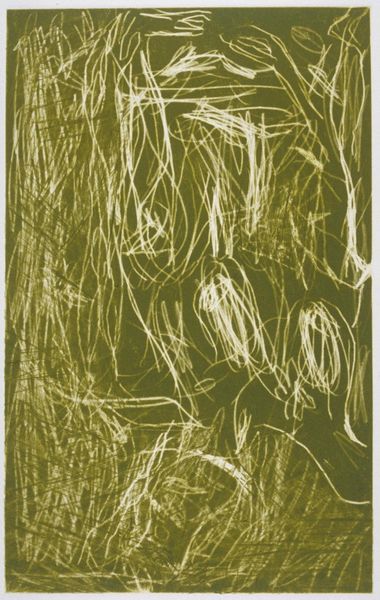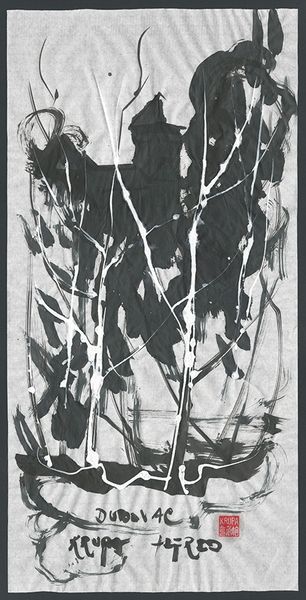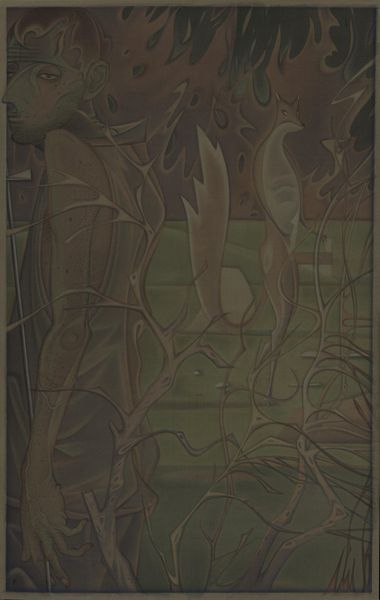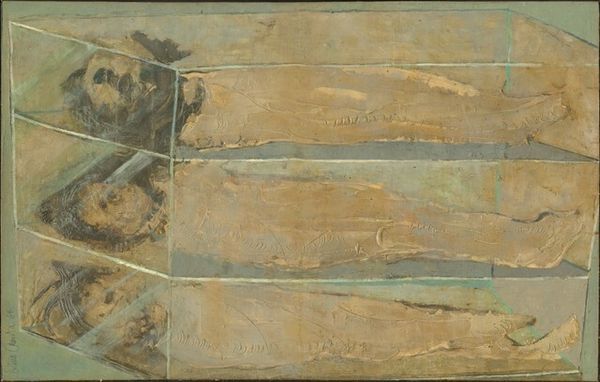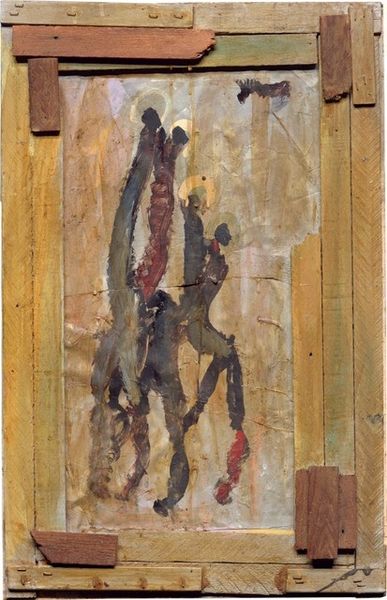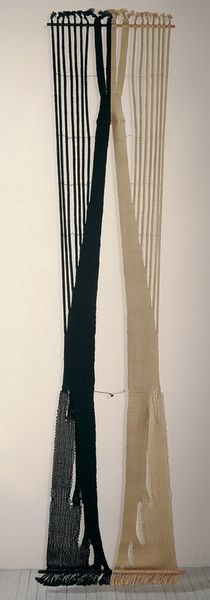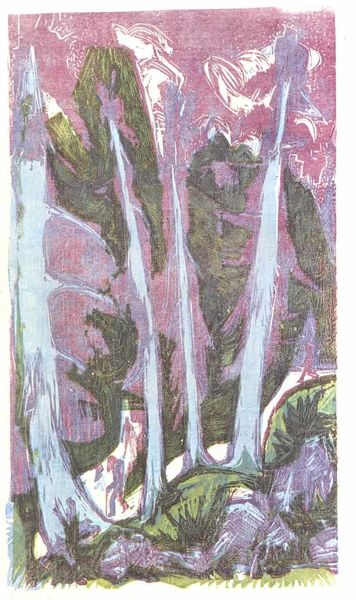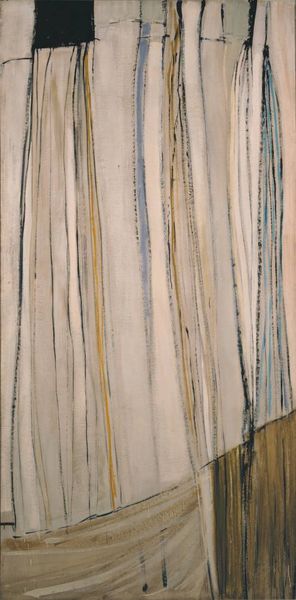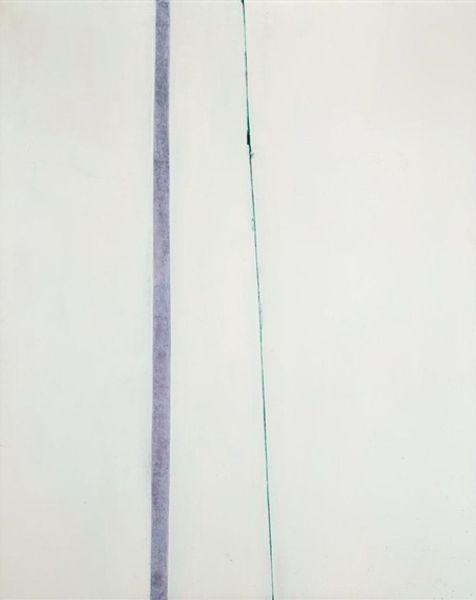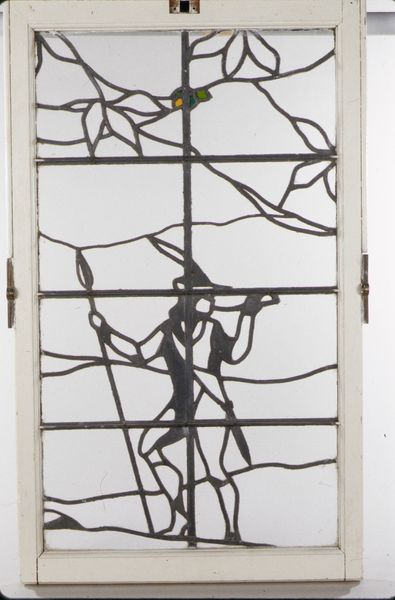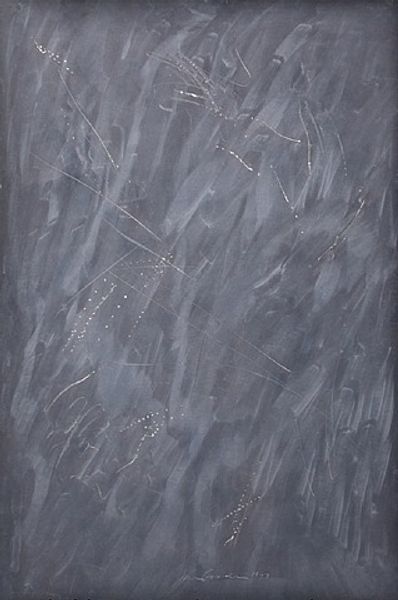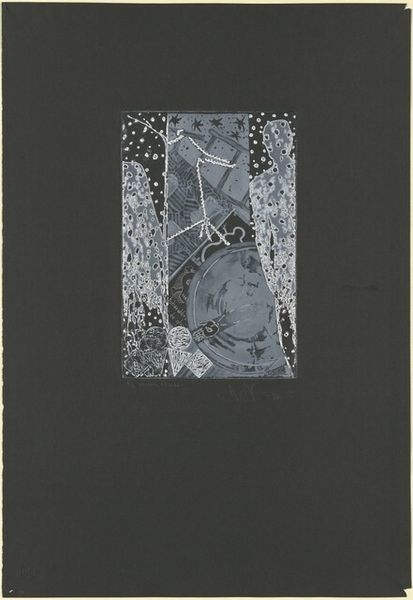
drawing, collage, watercolor, sculpture
#
drawing
#
organic
#
abstract painting
#
collage
#
water colours
#
watercolor
#
organic pattern
#
sculpture
#
abstraction
#
line
Dimensions: overall: 49.5 x 39.7 cm (19 1/2 x 15 5/8 in.)
Copyright: National Gallery of Art: CC0 1.0
Editor: Here we have Arthur Dove’s "Rain" from 1924, combining watercolor, collage and drawing. It feels…delicate, almost fragile, with these thin lines layered on a gray, hazy background. What draws your eye when you look at it? Curator: I’m immediately interested in Dove’s choices of materials here. He's not just using paint; he’s incorporating found objects, perhaps twigs or other natural elements. What does that tell us about his process? He blurs the lines between traditional drawing and sculpture. How is Dove democratizing artmaking by including everyday resources into his artistic project? Editor: That's interesting. It definitely challenges the idea of 'high art' materials. So, what would he be saying about society by making that kind of decision? Curator: I'd argue Dove challenges a hierarchical consumption model in his use of materiality, which could point towards critiquing contemporary consumption habits in society, at the time. What kind of labor and social practices might have been present that influenced his art, or was he rebelling from it altogether? Dove, and the other modernists in the period, also had an impulse for organic forms, like rain, that also were modern concepts with contemporary scientific developments. Editor: I hadn’t considered the connection to scientific advancements at the time. Curator: It raises the question, too: how does the value change for something we consider art, depending on its context, presentation or components? Is the final work as successful without these details, like found materials, because it democratizes who has access to create, without refined supplies? Editor: I guess not! I am viewing "Rain" through a totally new perspective now! Curator: Absolutely, and it reminds us to consider art making from more inclusive angles that consider materiality, which gives context and more access.
Comments
No comments
Be the first to comment and join the conversation on the ultimate creative platform.
